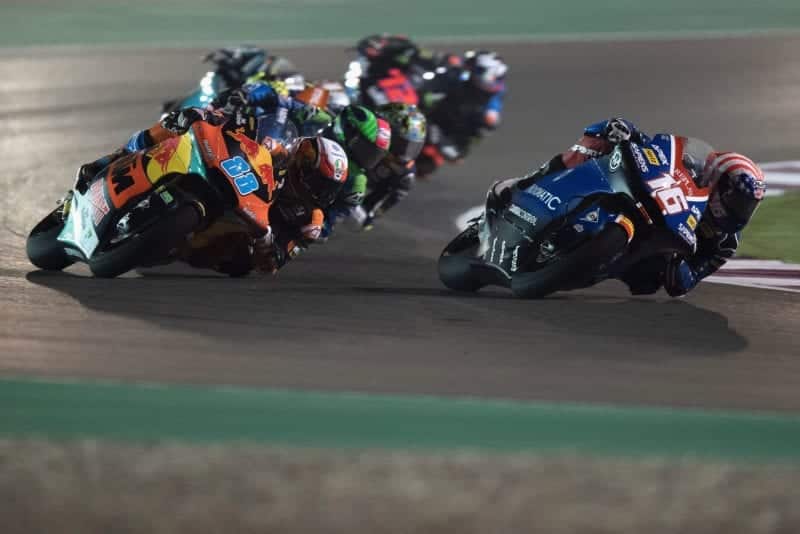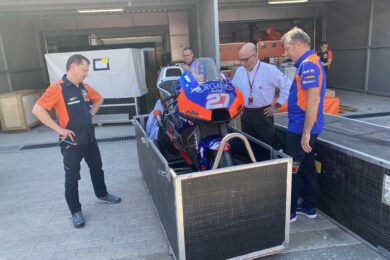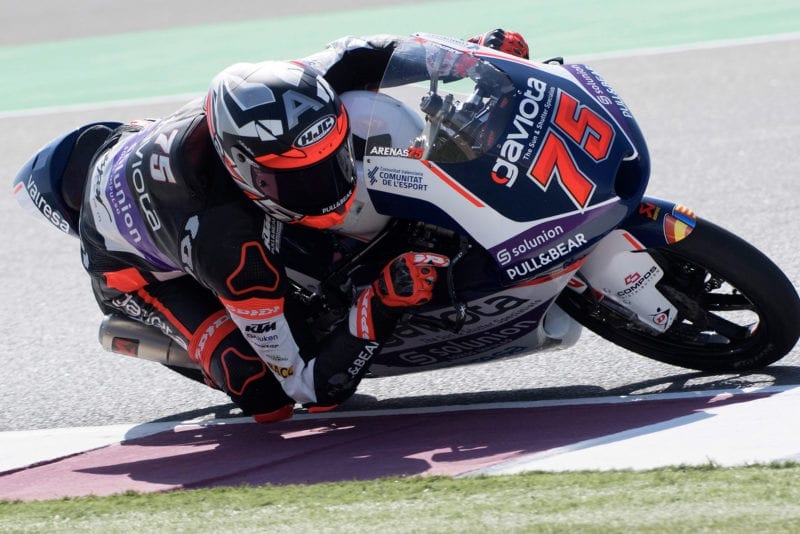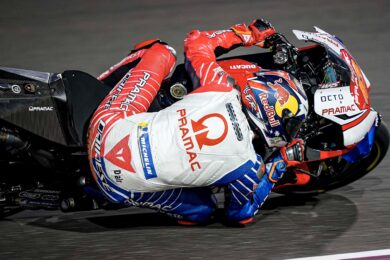Second, confidence. Two tough seasons, during which he scored just five points from 37 races, played havoc with his self-belief. Riding a better bike has helped restore some of his confidence, but former factory MotoGP rider John Hopkins has also done his bit as the American Racing team’s rider coach.
“I guess it’s that thing when you speak to people who’ve been in combat – the only person they can really relate to is someone else who’s been in combat,” explained Roberts’ father in Qatar.
“Other people just don’t get it, but Joe’s been able to talk to John about his feelings and about what he’s going through, and John knows exactly what he’s talking about.”
Hopkins has no doubt that Roberts has what it takes. “The second I saw Joe out on track I knew immediately there was no shortage of talent,” said the former factory Kawasaki and Suzuki MotoGP rider.
“The only thing that’s been holding him back is self-belief and confidence. Confidence is everything in racing and confidence breeds confidence, so it’s all come together in a great way.”
If he had gone with the softer compound, perhaps he would’ve made the podium party
Roberts was born in the USA in 1997, but conceived in the UK by British parents Matthew and Anna. Matthew is a visual-effects engineer, hence the move to Los Angeles. Dad has always been into bikes and started racing a Suzuki GSX-R750 in Californian club events, until workload forced him to quit racing. That’s when he bought a dirt bike to ride in the desert, then he bought another four, so his four sons could ride with him.
Matthew decided that racing was the way forward for the kids when he saw the seminal 1971 documentary On Any Sunday, starring actor/racer Steve McQueen and pro-racers like Dave Aldana and Mert Lawwill.
“I saw the movie and right away it was, like – flat track, fantastic – we’ve got to try that!” said Matthew.
“We found this ranch about an hour away, owned by a guy called Ken Maley, who used to make steel shoes for everyone – the Hayden brothers and other top guys. That’s where Joe started, aged five or six.”
Supermoto followed, then roadracing when Roberts was 11-years-old, progressing from a Honda NSR50 to a 65cc Metrakit, to a hybrid Honda 150 (a CFR150 motocross engine in an RS125 chassis) and finally a proper RS125. His successes on the 125 won him a Red Bull Rookies ride in 2011, 2012 and 2013.

Roberts finished just 0.131sec off a podium place
Getty






